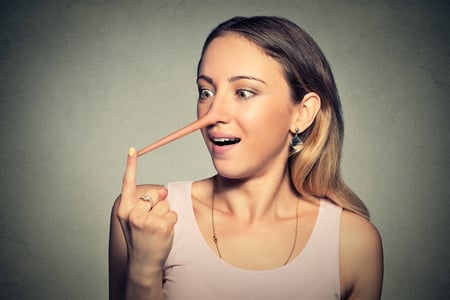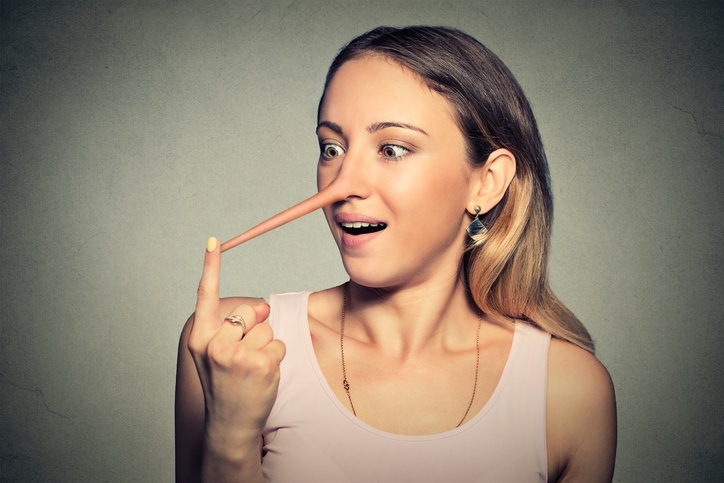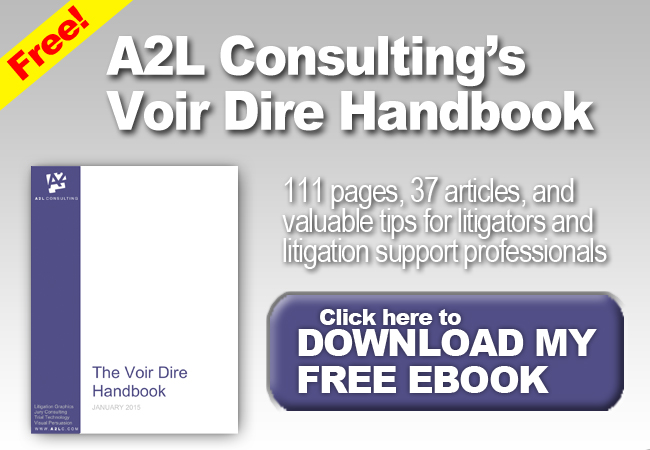 by Katie Bagwill
by Katie Bagwill
A2L Consulting
Wouldn’t it be nice to be able to learn, just from hearing a witness utter a few phrases, that the witness is lying? Unfortunately, we can’t read minds, so we need to make do with second best: reading the tone of the witness’s voice and eye movements.
The scientific community has been working hard to develop a way to gauge an individual’s truth telling based on the person’s behavioral, verbal, and physiological responses. In the meantime, you can use these ideas when questioning a witness, preparing your own witness to give testimony, and selecting potential jurors.
Vocal Cues. Using questioning methods similar to that of a polygraph, voice stress analysis is used to pick up on changes in the frequency in a person’s tone of voice when speaking. The basic idea is that when you are lying, the muscles that contract when you are speaking will produce a slightly higher or lower frequency. By having someone speak into a microphone, you can use a vocal stress analyzer on your computer or, thanks to technology, on your phone.
Why it should matter to you: Even if those tools aren’t available to you or would be too time-consuming to use, the basic principle is something you should keep in mind: lying causes physiological stress and stress causes a person’s vocal pitch to change. While a seasoned liar may be good at keeping his or her voice steady when lying, the average person (i.e. someone called for jury duty) could let it waver.
Eyeball Movements. There’s this idea floating around that if someone is looking to the right they are lying and if they look to the left they are telling the truth. While this isn’t necessarily always true, there is a science behind it. Research has been done that links patterns of eye movements to different forms of cognitive processing. Each direction notes the characteristics of the thought process in question (visual, auditory, emotional). The difference in sides refers not to just “lying” but to the cognitive processes used in creating a realistic story, which requires a higher level of thinking than recalling. (see also http://www.a2lc.com/eyechart)
Why it should matter to you: Take note of the witness’s or potential juror’s normal eye movements while speaking. Deviance from their “normal” is a stronger indicator of “creative” thinking than utilizing the eye movement chart alone. In combination with other methods of detecting deception, it is a useful tool.
Other articles about psychology, cogitive bias, persuasion, and influencing juries from A2L Consulting include:
- When Smart Ain’t So Smart - Cognitive Bias, Experts and Jurors
- I’m Right, Right? 5 Ways to Manage Juror Bias
- The Top 14 Testimony Tips for Litigators and Expert Witnesses
- Font Matters - A Trial Graphics Consultant's Trick to Overcome Bias
- Is Hiring a Jury Consultant Really Worth It?
- 7 Tips to Take “Dire” out of Voir Dire
- Jury Selection and Voir Dire: Don't Ask, Don't Know
- Could Surprise Be One of Your Best Visual Persuasion Tools?
- When a Good Trial Team Goes Bad: The Psychology of Team Anxiety
- 10 things every mock jury ever has said
- Are Jurors on Your “Team”? Using Group Membership to Influence
- FREE DOWNLOAD: Tips for Mock Trials and Using Jury Consultants
- A2L Voted Best Jury Consultants by Readers of LegalTimes




Leave a Comment